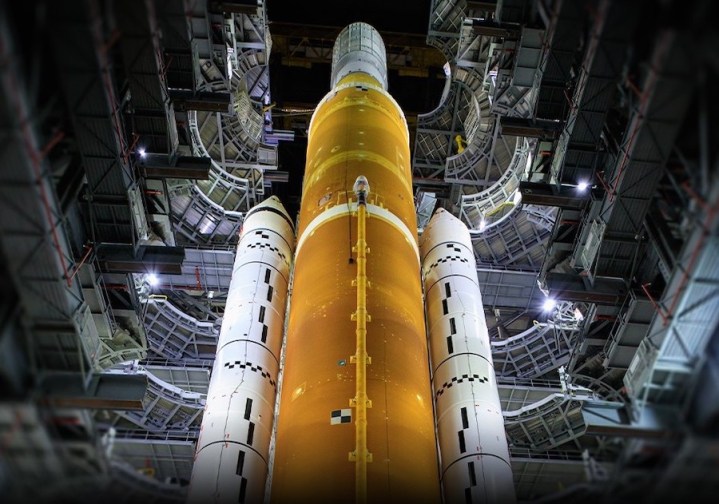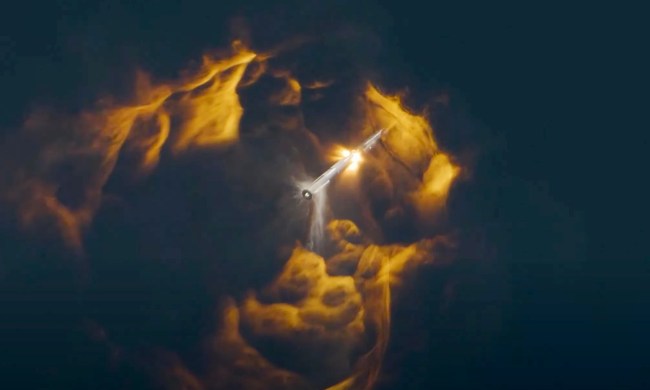This year promises a bunch of launches featuring new rockets from a range of operators. Let’s take a look at five notable rocket launches that are sure to make headlines over the coming months:
ULA’s Vulcan Centaur

The first of these takes place on Monday, January 8, with United Launch Alliance conducting the maiden launch of its brand-new Vulcan Centaur rocket. The 202-feet-tall (61.6-meter) vehicle will launch from the Kennedy Space Center in Florida on a mission to become the first to land a privately built lander on the moon.
The Vulcan Centaur is a versatile two-stage rocket in that can be configured with two, four, or six solid rocket boosters, giving it a maximum thrust of 3.8 million pounds — that’s more than double that of SpaceX’s workhorse Falcon 9 rocket.
The ULA’s new rocket will replace both of ULA’s existing launchers, the Atlas V and Delta IV Heavy.
SpaceX’s Starship

SpaceX is currently planning the third launch of the most powerful rocket ever built, the Starship.
Following two failed test missions last year, the Elon Musk-led spaceflight company is keen to see the 397-feet-tall (121-meter) rocket achieve its first orbital mission in a flight that will take place once SpaceX receives permission from the Federal Aviation Administration, hopefully in the coming weeks.
With the first-stage booster’s 33 Raptor engines packing a colossal 17 million pounds of thrust at launch, Starship liftoffs are a sight for rocket fans to savor.
The long-term plan is to use the Starship to transport cargo and crew to the moon, Mars, and beyond.
NASA’s Space Launch System

In November, NASA is set to use its powerful Space Launch System (SLS) rocket for its first crewed flight, powering its Orion spacecraft and four astronauts toward the moon in the Artemis II mission.
The SLS rocket flew for the first time just over a year ago, sending a crewless Orion spacecraft on a voyage around the moon that paved the way for Artemis II.
The 322-feet-tall (98-meter) rocket packs around 8.8 million pounds of thrust at launch — that’s around a million pounds more than the mighty Saturn V rocket that powered the Apollo astronauts toward the moon five decades ago.
Arianespace’s Ariane 6

This year should also see the first flight of Arianespace’s Ariane 6 vehicle for European heavy-lift missions.
France-based Arianespace is building two versions of the Ariane 6. The Ariane 62 will fly with two strap-on boosters, while the more powerful Ariane 64 will fly with four.
With a height of 207 feet (63 meters), the Ariane 6 will weigh almost 900 tons when launched with a full payload, which, according to the spaceflight company, is “roughly equivalent to one-and-a-half Airbus A380 passenger aircraft.”
Notably, the rocket’s upper stage engine is able to be stopped and restarted multiple times, making it ideal for missions in which multiple satellites need to be placed in different orbits.
Rocket Lab’s Neutron

Rocket Lab is a relatively new commercial spaceflight company that’s been making a name for itself in recent years, gradually increasing the frequency of its launches to deploy small satellites for a range of private firms and organizations, while also announcing plans for more ambitious endeavors.
These include the development of a brand new rocket called the Neutron, which, similar to SpaceX’s Falcon 9, will be capable of landing the first-stage booster so that it can be used for multiple missions. Such a system will enable Rocket Lab to slash mission costs so that it can offer better prices to companies looking to deploy satellites in orbit.
The 131-foot-tall (40-meter) Neutron will also be capable of interplanetary missions and crewed spaceflight, Rocket Lab said, adding that it plans to perform the first test flight of the new rocket later this year from NASA’s Wallops Flight Facility in Virginia.


